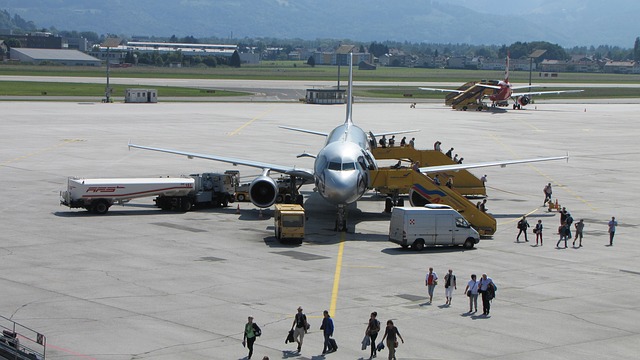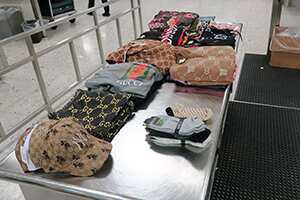From Ports to Airports: Efforts Towards Aviation Security in Iraq
By: Yazan Weshah, Senior Project Lead, CRDF Global
When we think about border security, we typically think of security measures at land ports of entry that dictate how people or goods enter a country. We often forget about other well-traveled ports, such as airports and seaports. Like land border stations, these ports face significant national security challenges. In Iraq, local authorities are undertaking comprehensive steps to improve security at airports and within the aviation industry.
An Evolving Security Threat
From the first commercial passenger trip in 1914 to the now ubiquitous airmail service that modernized how we send and receive parcels and shipments, countries have consistently invested in making air travel faster, more convenient, and efficient. However, history has shown slower progress when it comes to aviation security, which has been largely reactive.
Initially, boarding a plane was a quick and convenient experience with limited security precautions involved. Unfortunately, the airline industry quickly learned the deadly repercussions of lax security measures. In 1986, Iraqi Airways flight 163 from Baghdad to Amman, Jordan, was hijacked while carrying 91 passengers and 15 crew members. After eluding security checks in the airport, the hijackers detonated two grenades in flight, which resulted in the death of over 60 people. Shortly after this attack, 259 passengers were killed when Pan Am flight 103 exploded over Lockerbie, Scotland, in 1988. Limited inspection protocols allowed a bomb to be planted on the aircraft. It changed the aviation industry forever, bringing stringent and more regulated protocols.
However, it was not until the September 11 terrorist attacks that new security protocols were introduced such as more stringent inspection of luggage and passenger belongings, expanded lists of prohibited items, and restricted access to boarding gates and other sensitive areas.
The Call for Change
Over the years, aviation security efforts have been largely spearheaded by the International Civil Aviation Organization (ICAO). ICAO’s pivotal position as the nexus for promoting standards and aviation security, airport management, and border-crossing procedures has provided the international community with a uniform body of knowledge to help sustain aviation security efforts globally. However, ICAO has faced challenges ensuring that all member states operate with the same level of safety and efficiency. Countries with histories of conflict and instability often face more significant border threats but lack the resources and centralized authority to mitigate them.
An ongoing collaboration between the U.S and Iraq aims to solve this challenge and serve as a model for other nations looking to strengthen their aviation security. Led by the U.S. Department of State’s Office of Export Control Cooperation, the Export Control and Related Border Security Program (EXBS) supports partner countries in enhancing and promoting border security to interdict and control various threats.
EXBS is partnering with CRDF Global and Iraq’s Civil Aviation Authority (ICAA) to provide Iraq with the necessary guidance and mentorship to optimize its aviation security governance and infrastructure. Aviation security in Iraq has been weakened by decentralization. The country’s 13 airports are currently managed by various sects and administrations, leading to a lack of uniformity in aviation security standards.
The first step in strengthening ICAA authority was establishing a National Civil Aviation Security Programme (NCASP) per ICAO requirements. While ICAA did develop a preliminary NCASP, it lacked compliance with ICAO standards and annexes. To solve this, the EXBS Program has undertaken an extensive review of ICAA’s 2019 NCASP to offer recommendations concerning future enhancements, equipment procurement, and training to achieve greater compliance with the ICAO standards.
The NCASP review process was also accompanied by deploying a capability maturity model, applying an As-Is Assessment, and a benchmarking exercise so that Iraq’s civil aviation security stakeholders could understand their current capability and capacity compared to regional and global aviation players. These initiatives will help Iraq meet regional and international obligations aligned to the Standards and Regulatory Practices (SARPs) as required by the ICAO and International Aviation Safety Assessment administered by the U.S. Government’s Federal Aviation Administration.
Having an updated NCASP and adopting a whole-of-government approach towards aviation security will support the country in building the capacity at Iraqi airports to detect, interdict, and respond to threats and ultimately end restrictions on international travel. This could one day lead to improvements in trade, the economy, and tourism in Iraq. Such key milestones will establish Iraq as a regional champion and advocate for aviation security for other neighboring countries to follow. Prioritizing national cohesion and integration will allow Iraq to open new trade lanes to secure a sustainable investment ecosystem, ushering Iraq into a new age of greater independence and regional partnership.
Aviation security continues to mature and requires extensive attention, exchange, and communication at an international level as solutions to today’s problems may become the vulnerabilities of tomorrow. Therefore, drawing from international counterparts and examples will ensure global aviation security development and growth, creating a safer border environment and prospering economies.
For more information on this initiative in Iraq, please register to attend an upcoming webinar hosted by CRDF Global.




